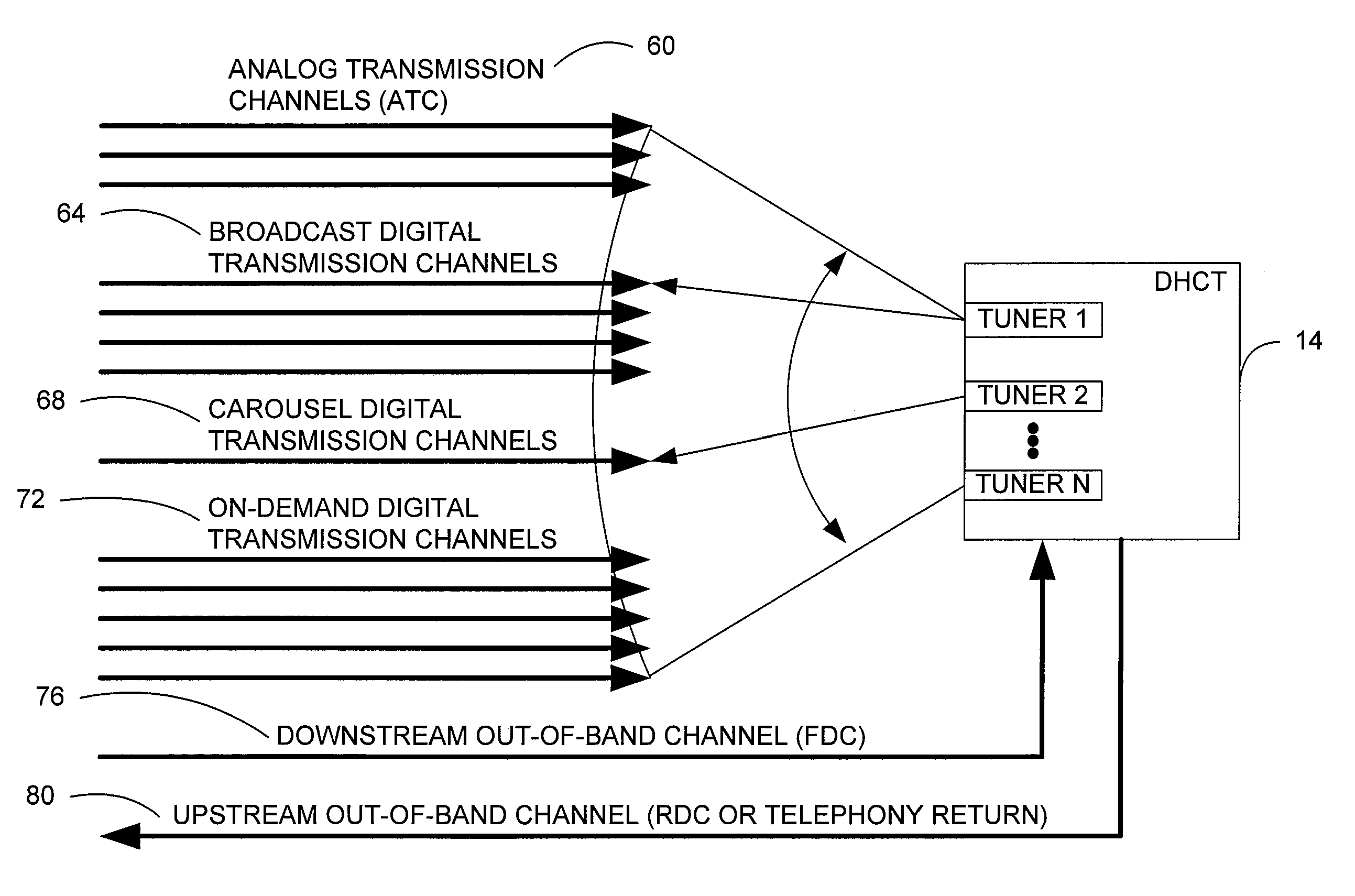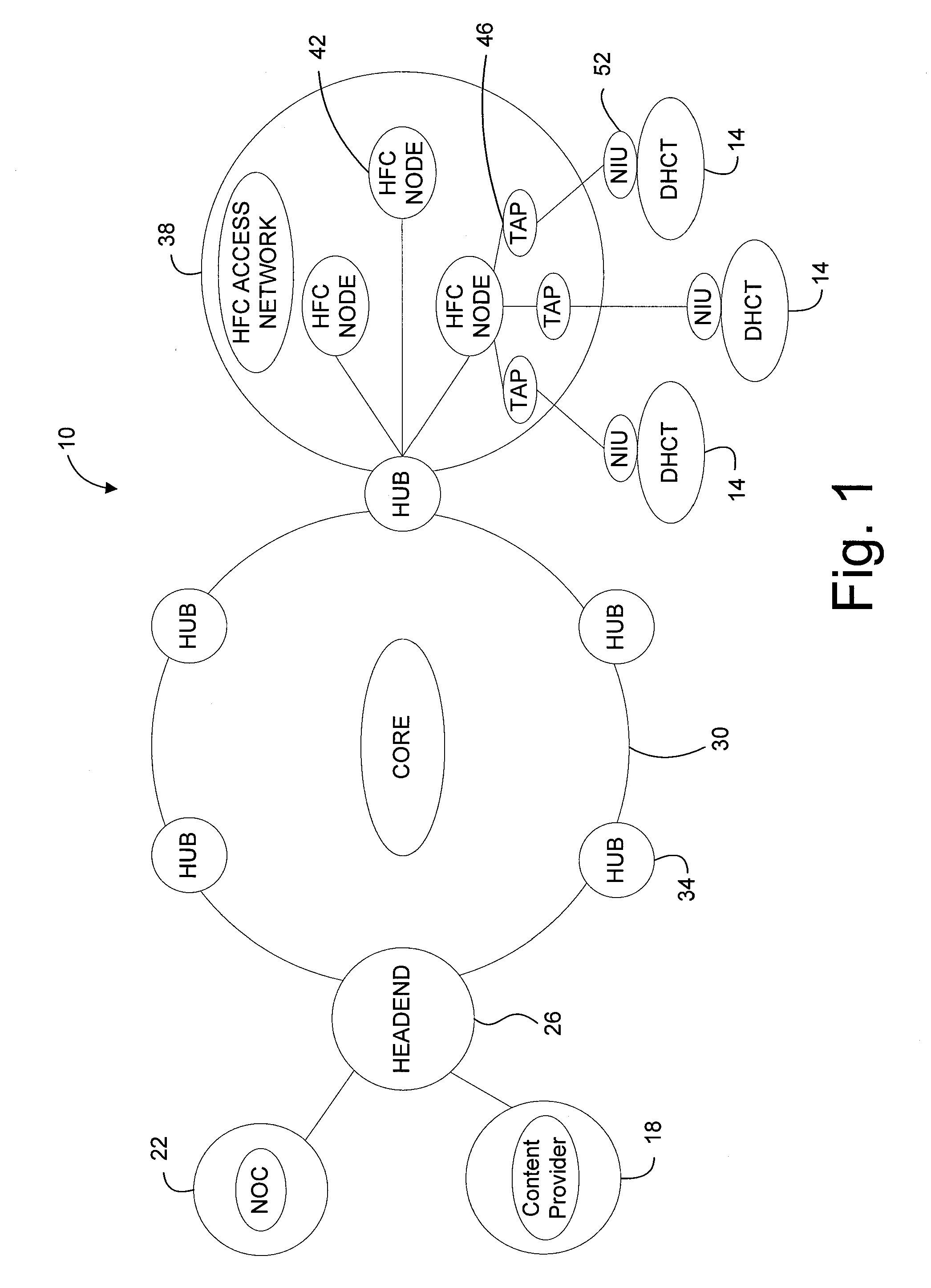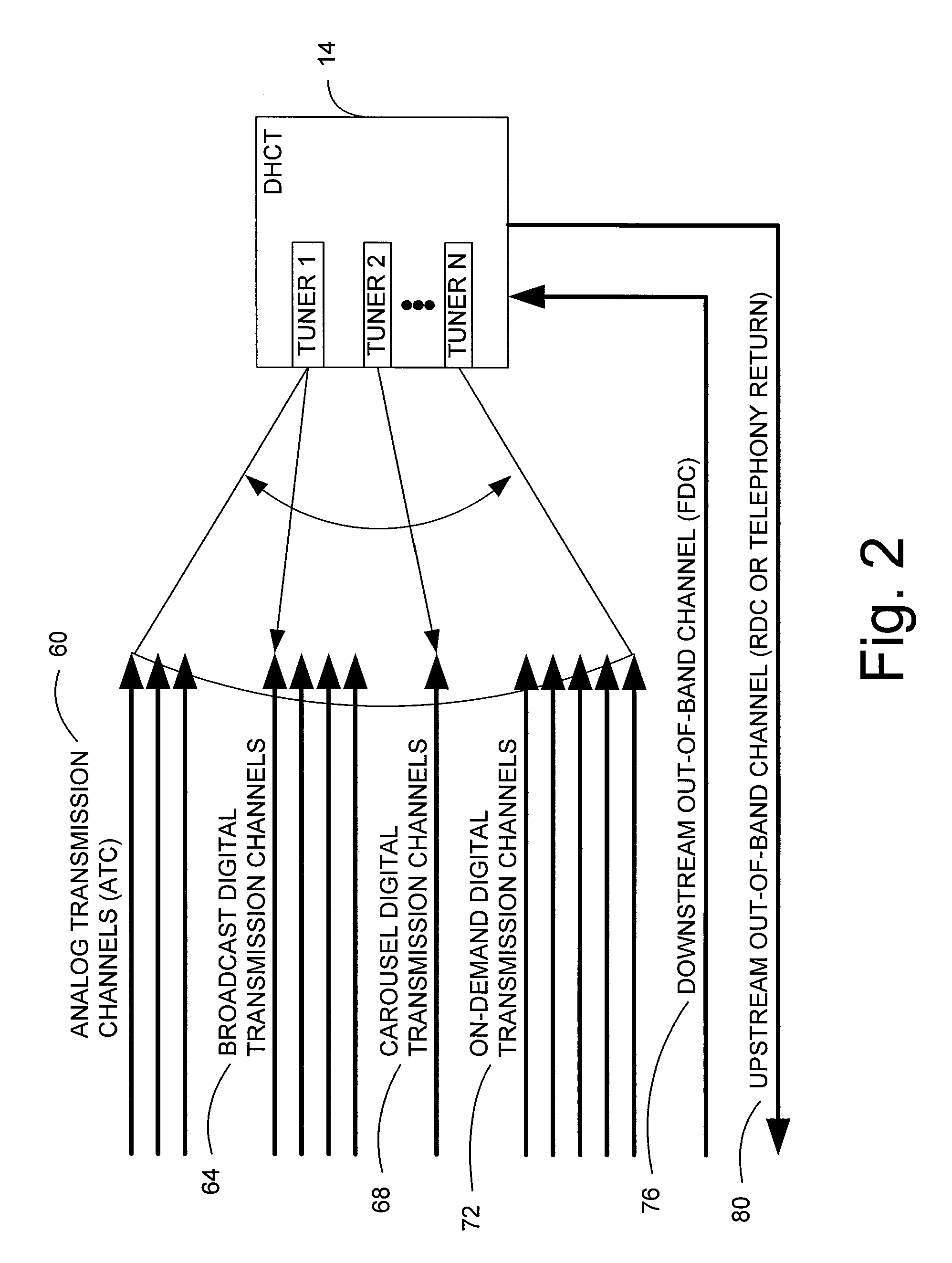Systems and methods for adaptive pricing in a digital broadband delivery system
a technology of digital broadband and pricing system, applied in the field of digital broadband delivery system, can solve the problems of limited traditional delivery system, inconvenient model, and large bandwidth resources, and achieve the effects of reducing the number of subscribers, bandwidth, and reducing the cost of equipmen
- Summary
- Abstract
- Description
- Claims
- Application Information
AI Technical Summary
Benefits of technology
Problems solved by technology
Method used
Image
Examples
Embodiment Construction
[0021]The present invention now will be described more fully hereinafter with reference to the accompanying drawings, in which preferred embodiments of the invention are shown. This invention may, however, be embodied in many different forms and should not be construed as limited to the embodiments set forth herein; rather, these embodiments are provided so that this disclosure will be thorough and complete, and will fully convey the scope of the invention to those skilled in the art. Like numbers refer to like elements throughout.
Digital Broadband Delivery Systems
[0022]The present invention is generally implemented as part of a Digital Broadband Delivery System (DBDS). Hence, an illustrative DBDS and its operation will be described initially. FIG. 1 shows a block diagram view of a DBDS 10 that is generally a high quality, reliable and integrated network system that features video, audio, voice and data services to Cable TV subscribers. Although FIG. 1 depicts a high level view of a...
PUM
 Login to View More
Login to View More Abstract
Description
Claims
Application Information
 Login to View More
Login to View More - R&D
- Intellectual Property
- Life Sciences
- Materials
- Tech Scout
- Unparalleled Data Quality
- Higher Quality Content
- 60% Fewer Hallucinations
Browse by: Latest US Patents, China's latest patents, Technical Efficacy Thesaurus, Application Domain, Technology Topic, Popular Technical Reports.
© 2025 PatSnap. All rights reserved.Legal|Privacy policy|Modern Slavery Act Transparency Statement|Sitemap|About US| Contact US: help@patsnap.com



